Adventures of an ALMOST fifty-year-old backpacker chronicles my six-month journey through New Zealand, Australia, SE and E Asia. You can read its origin story here.
It’s got culture, history, travel advice, and just a sprinkle of neuroses.
Subscribe, share with family and friends, and leave your thoughts and recommendations in the comments.
Thin streets paved with large beige and grey stones. One- and two-story buildings fronted with bamboo shades and brown wooden slats. Silver clay roof tiles present such a shiny polish they look metallic, sometimes swooping up at the corners. This is old Kyoto, and it doesn’t just exist in one part of the city, there are pockets throughout.
Wide avenues lined with modern office buildings. Department stores, like Takashimaya, sell contemporary fashions in a luxurious setting. Stairs descend into clean and efficient subways. A pizzeria sits next to an Izakaya, above which sits a western-style steakhouse.
Walking through Kyoto is like traveling through time.
Sometimes old is made new. Nishiki Market is a good example. A colorful arcade canopy covers several blocks, giving it the feel of an outdoor mall, yet the street has served as an active market since fourteenth-century fishmongers worked the lane.
Unlike much of Japan, the allies spared Kyoto from significant bombing. Langdon Warner, one of the Monuments Men, who are more known for recovering stolen art from the Nazis, argued for its protection. War Secretary Henry Stimson convinced Truman to remove it from the list of potential atomic bomb targets. Other factors, like a lack of military importance, led to it being spared, and thank goodness, because Kyoto is a magical place.
It was Japan’s imperial capital from 794 to 1869, and while earthquakes and fires have taken a toll, thousand-year-old buildings still stand. The city boasts nearly 2000 Buddhist temples and Shinto shrines.
Here’s an example of a day in Kyoto. It began at my hotel in Sanjo, a neighborhood where old and new intermix. I passed a shop house selling North Face, followed by a large boutique selling antique hand-painted fans. I crossed a couple of modern avenues, the Kamo River, and entered Gion, the famous geisha district. Hanamikoji Street is at the heart of the neighborhood, off of which radiate super-thin curving streets. I went early in the day, so could wander freely, not subject to the restriction the city has put on tourists entering certain streets in the area.


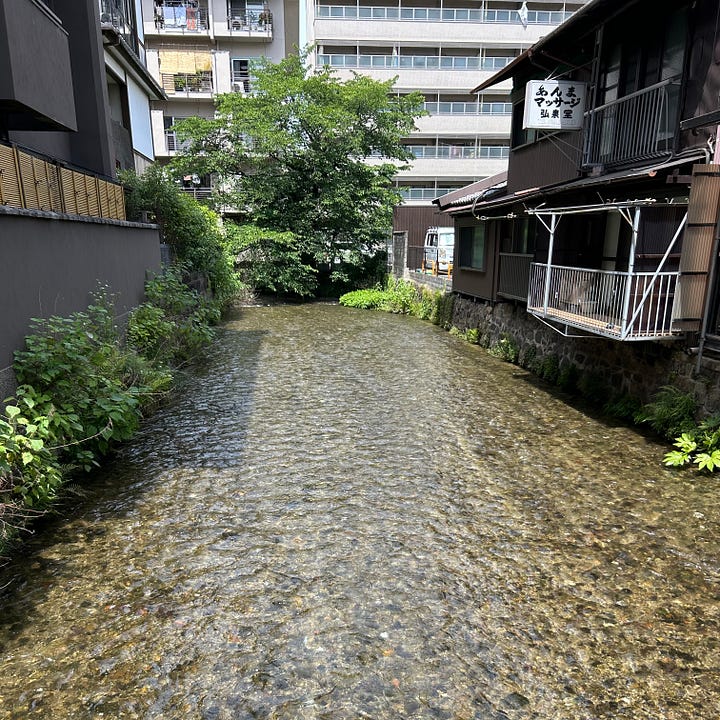
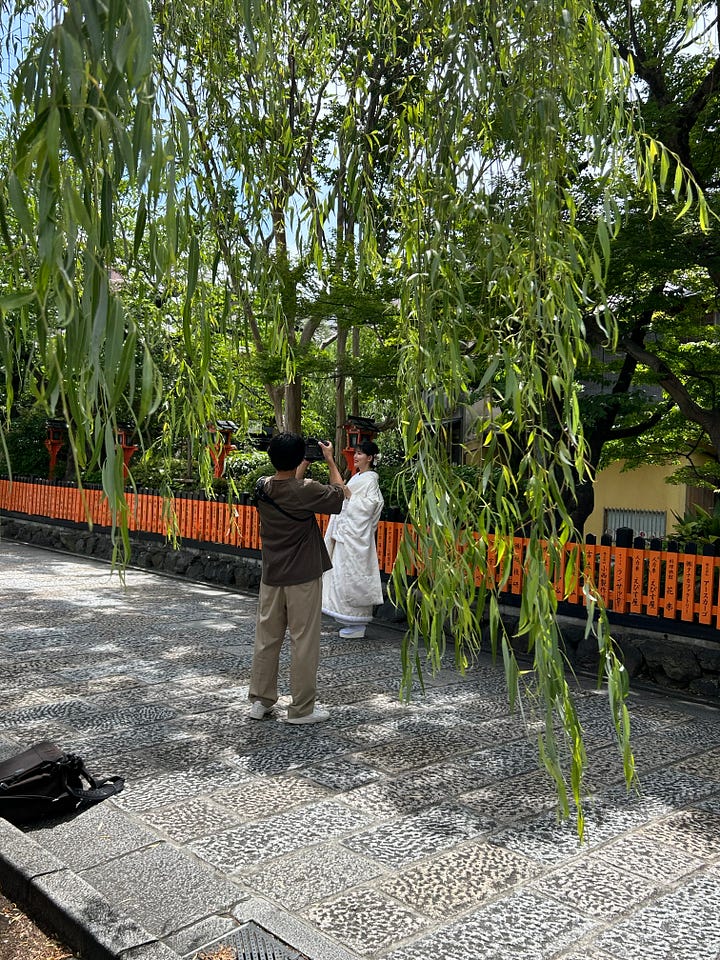
In the area around Gion, I visited a number of temple complexes.
Kenninji Temple: Founded in 1202, it’s one of the oldest Zen Buddhist temples in Kyoto and one of seventeen UNESCO heritage sites in the city.

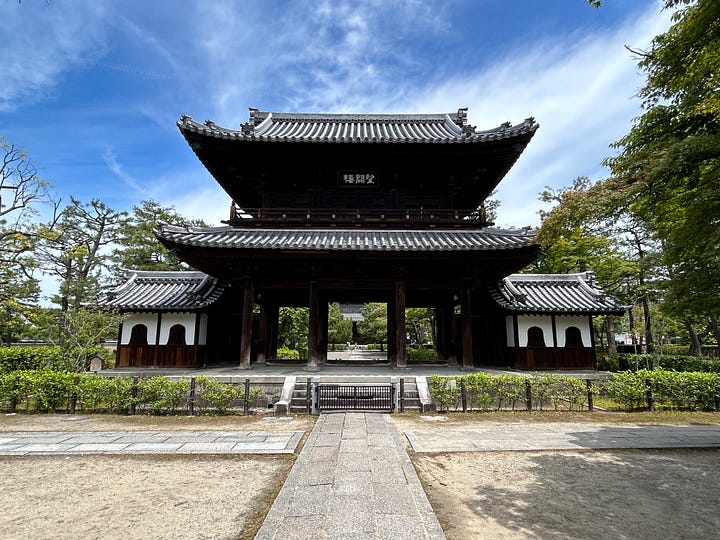
Yasaka Shrine: Founded in the seventh century, with its main hall built in the seventeenth century, is one of the first Shinto shrines in the city.
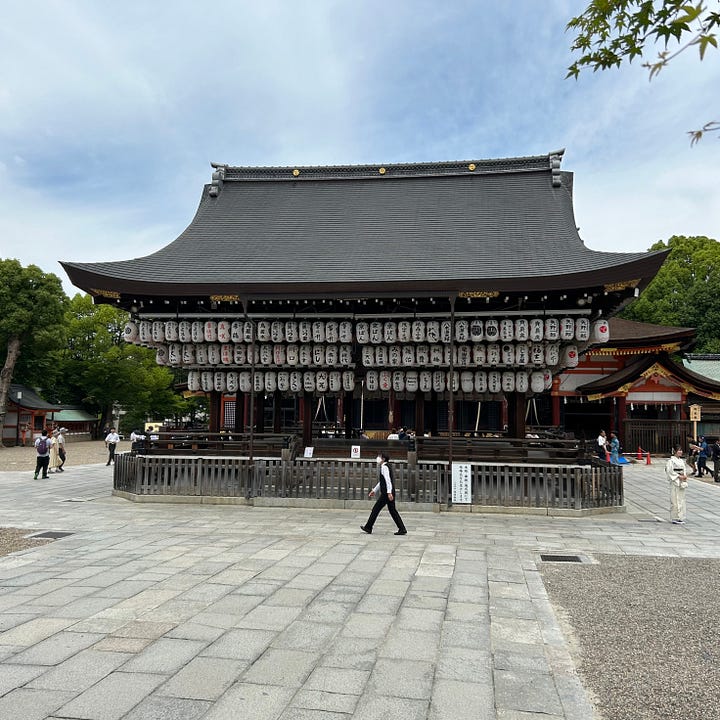

Maruyama Park: Once part of Yasaka Shrine’s grounds, its latest iteration is a modern park designed in the late nineteenth century.
Chion-In temple: Founded in 1133 as one of the first Jodo Shu Buddhist temples, it’s a complex that crawls up the hillside.
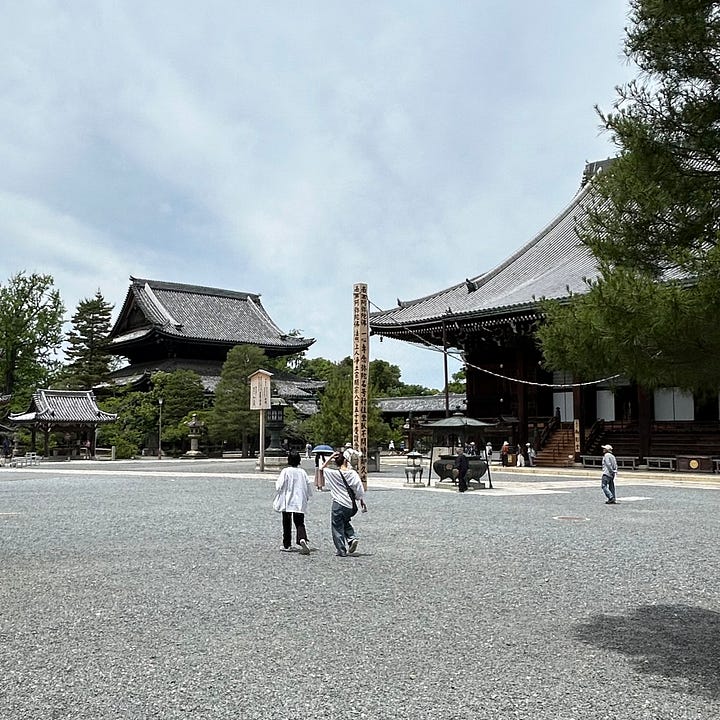

After lunch at Shuiro, where I feasted on Scotch eggs with a Japanese twist, I landed at Kyoto City KYOCERA Museum of Art. For its ninetieth anniversary, the museum was presenting a Takashi Murakami exhibit, mostly made up of new works. He’s a master of making the old new. Bursting with color, his Manga-infused pop style is in dialogue with traditional Japanese arts. He studied Nihonga painting, a traditional Japanese style that emphasizes flat compositions, bold colors, and natural subjects. This influence is evident in the two-dimensionality and graphic quality of his work. He was also influenced by traditional Japanese woodblock prints (ukiyo-e) with their bold outlines and flat colors.
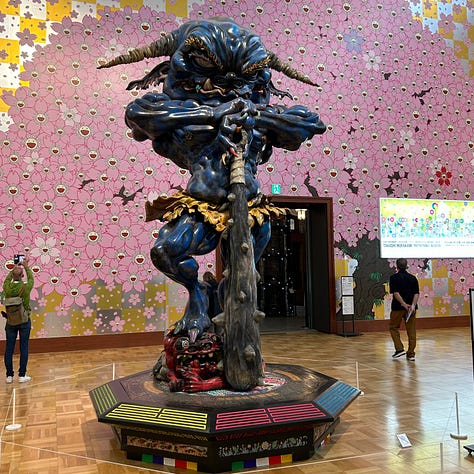
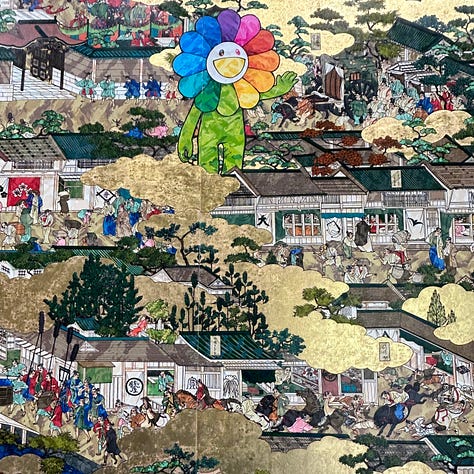
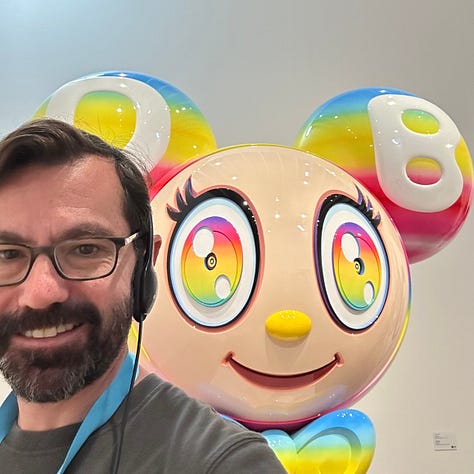
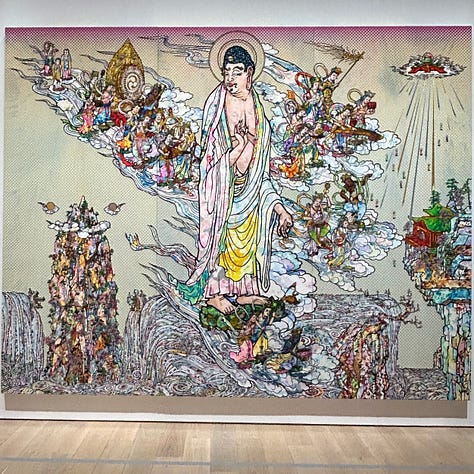
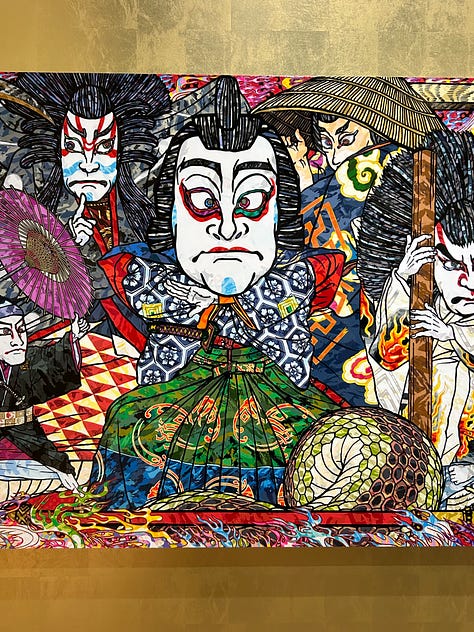
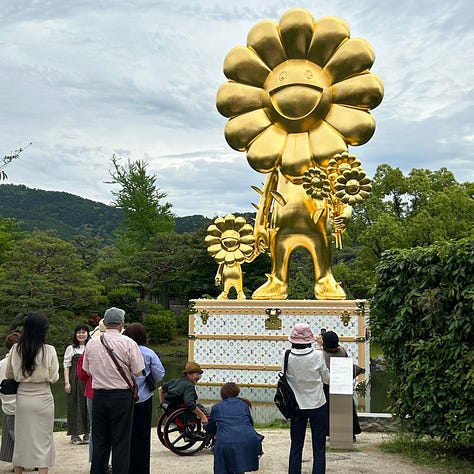
I squeezed a lot into that day, and while everyday was not as action packed, I travelled back in time on several occasions. Here’s where I went:
Nijo Castle: Built in the early 1600s, it was once a powerful symbol of shogunate rule. Despite a drizzly day, I enjoyed walking through its opulent palace, intricate fortifications, and beautiful gardens.


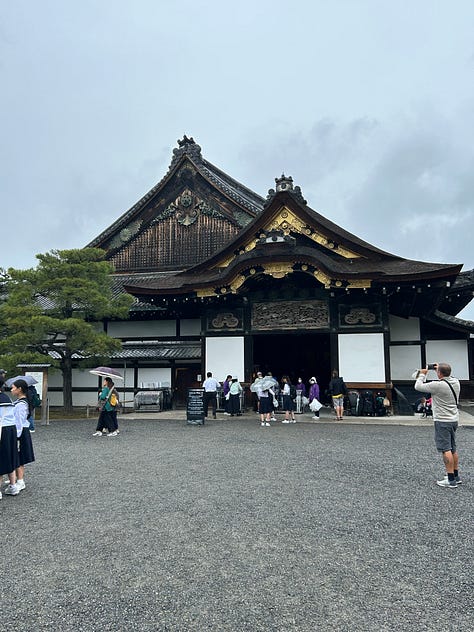
Kiyomizu-dera: Meaning "Pure Water Temple," it’s a stunning Buddhist temple perched on a Kyoto hillside. Its iconic wooden stage juts out, offering panoramic views of the city and surrounding mountains.
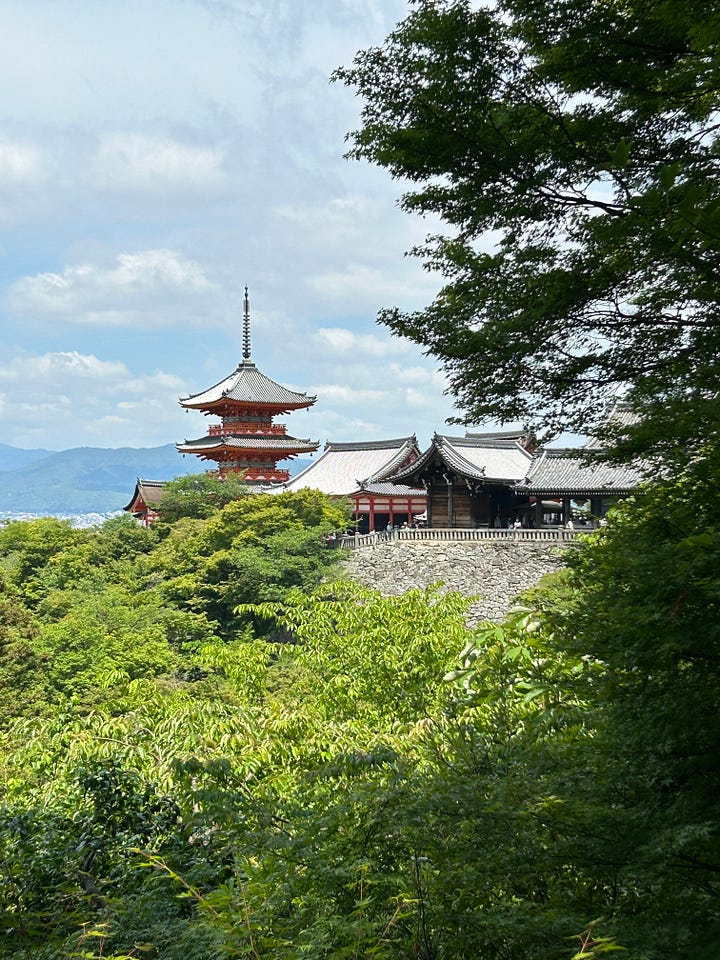

Sanjūsangendō Temple: Built in the 12th century, this temple is renowned for its captivating rows of identical Kannon statues. I wasn’t allowed to take photographs inside, but the atmosphere was mesmerizing and spiritual.
Fushimi Inari - Shinto shrine dedicated to Inari, the god of rice, sake, and business success. It's famous for its seemingly endless torii gates, thousands of bright vermilion gates winding up a mountain path. I visited after a long day so didn’t make it to the top. I suggest you make this temple a priority so you can take it all in.

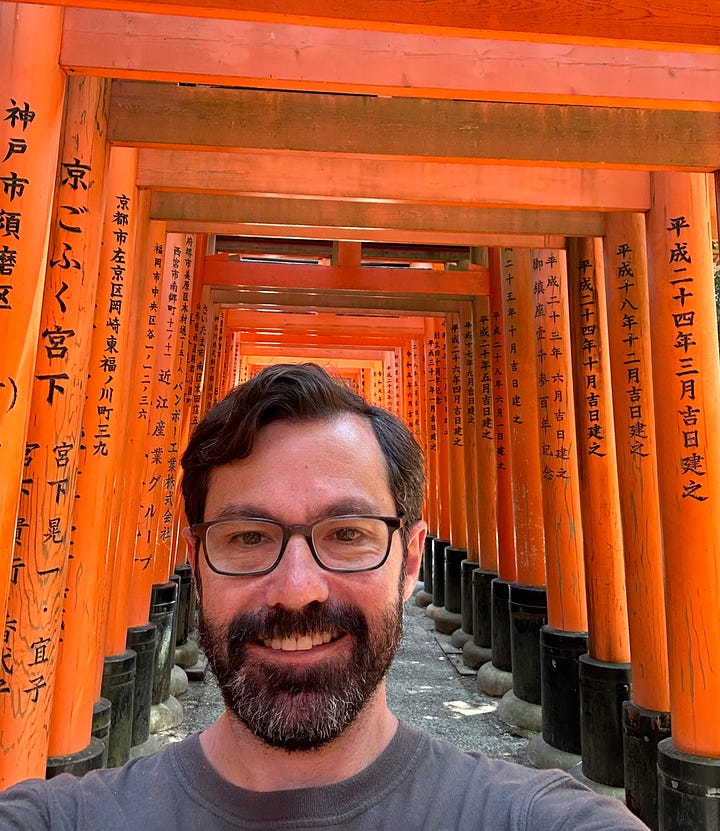
I capped off my stay with a day trip to Arashiyama, easily accessible via train. I started at the Otagi Nenbutsuji Temple, renowned for its collection of over 1,200 stone statues of rakan, Buddha's disciples, each with unique expressions and poses. The temple's tranquil setting and charming statues make it a hidden gem worth exploring. I then walked downhill through centuries-old windy lanes, stopping at the Adashino Nenbutsuji Temple. Many people travel to Arashiyama to walk through its bamboo forest, but the main one gets crowded. Adashino Nenbutsuji has its own bamboo forest, which is much more peaceful.
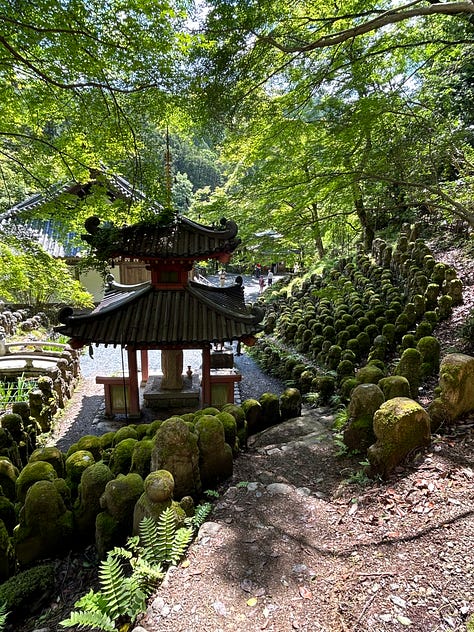
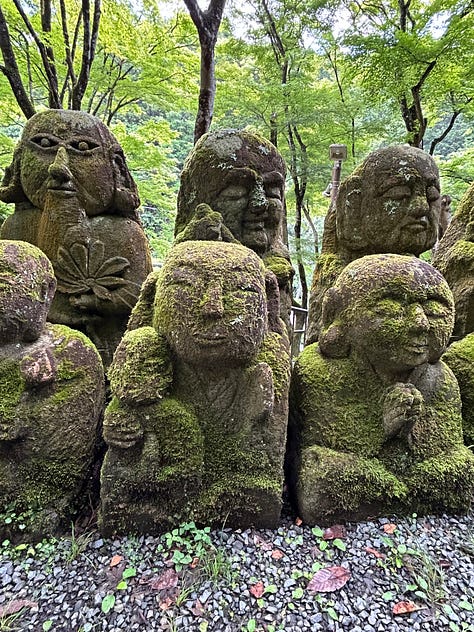



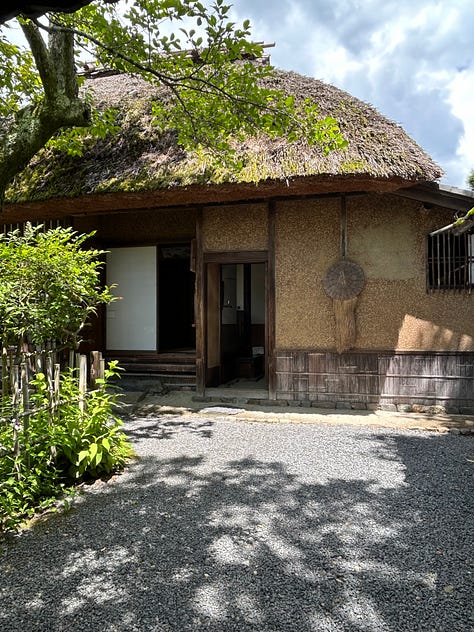

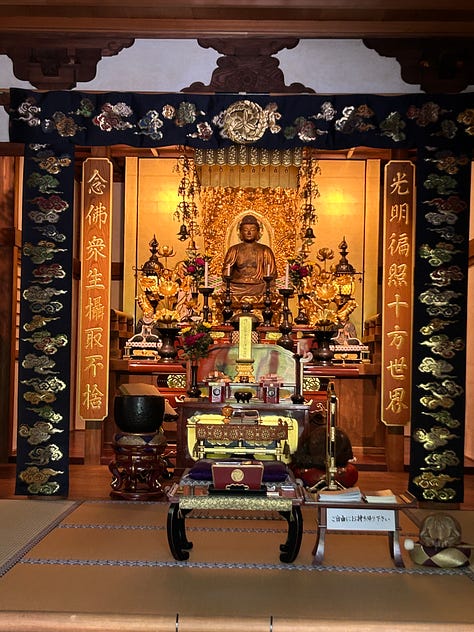
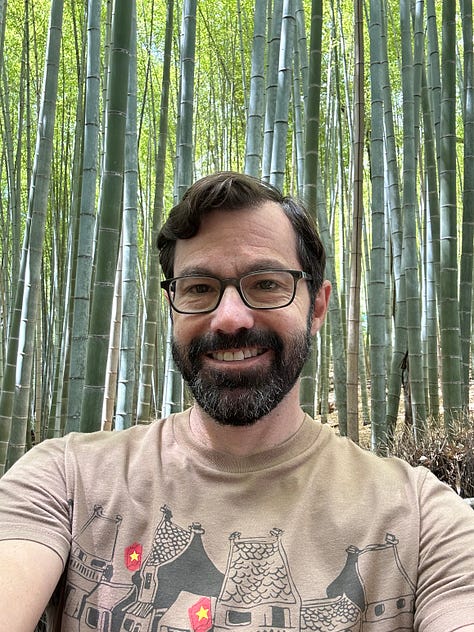
Traveling solo, I used both old and new methods to connect with others. I met a couple of people the old-fashioned way, sitting next to them in a bar or a restaurant and striking up a conversation. I also used Grindr. Don’t judge. Hear me out. People know Grindr as a sex app for gay men, and while it certainly serves that purpose, it’s also a great way to connect because it uses geolocation to tell you who is nearby, and some people are just looking to hang out. I met the guy I went snorkeling with in Okinawa on Grindr. And I enjoyed a couple of meals in Kyoto with a San Franciscan visiting Japan. Did I end up hooking up with any of these guys? None of your business.
Back to the subject at hand, I loved Kyoto. It was one of the most historically beautiful places I’ve ever been. After rainy days in not so stunning Okinawa, it was just what the doctor ordered.
Notes:
All photos are my own.
I put daily pics and video on Instagram, mostly in my stories, so follow me there for a day by day account.
Hit me up with thoughts or questions in the comments.






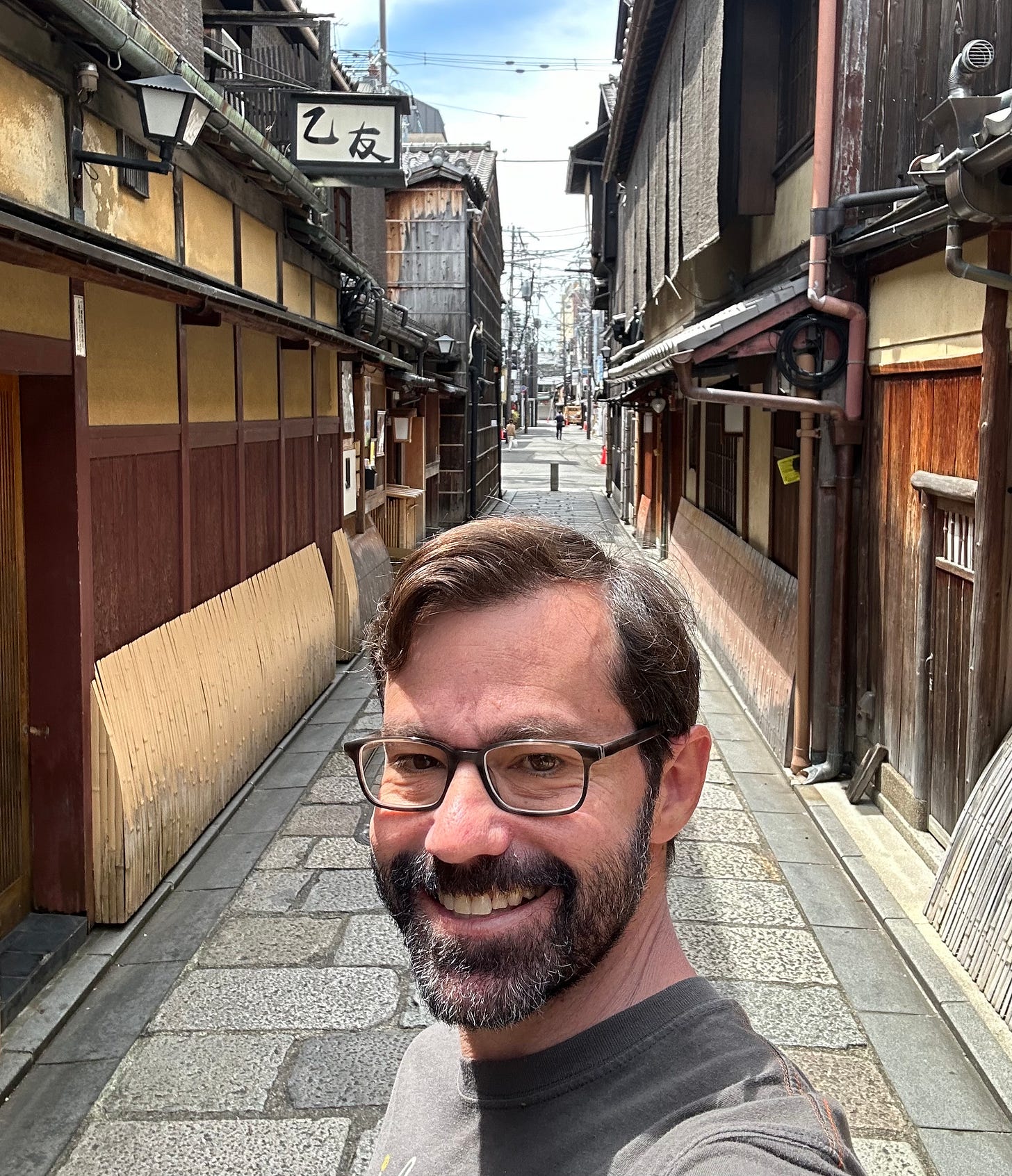

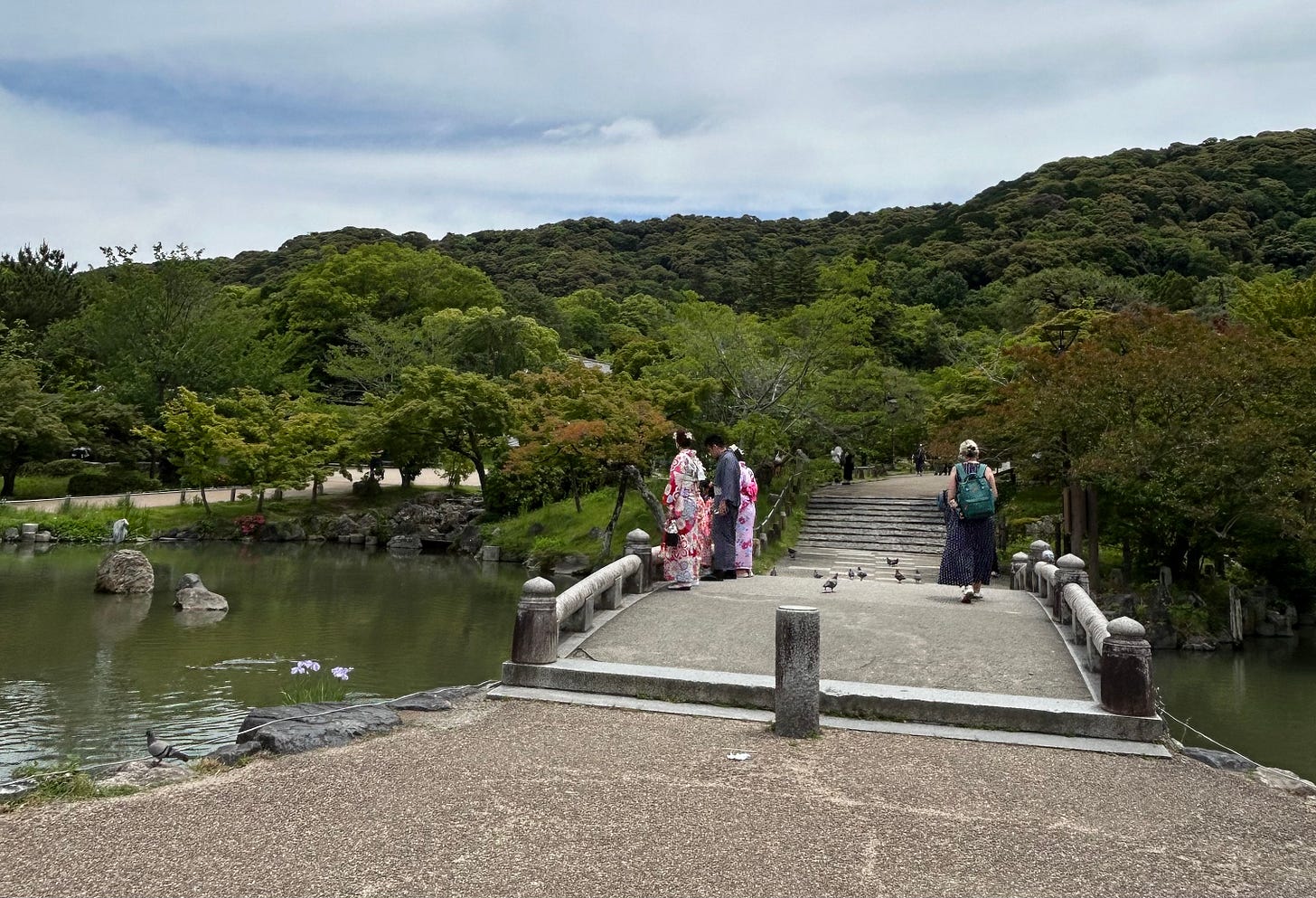

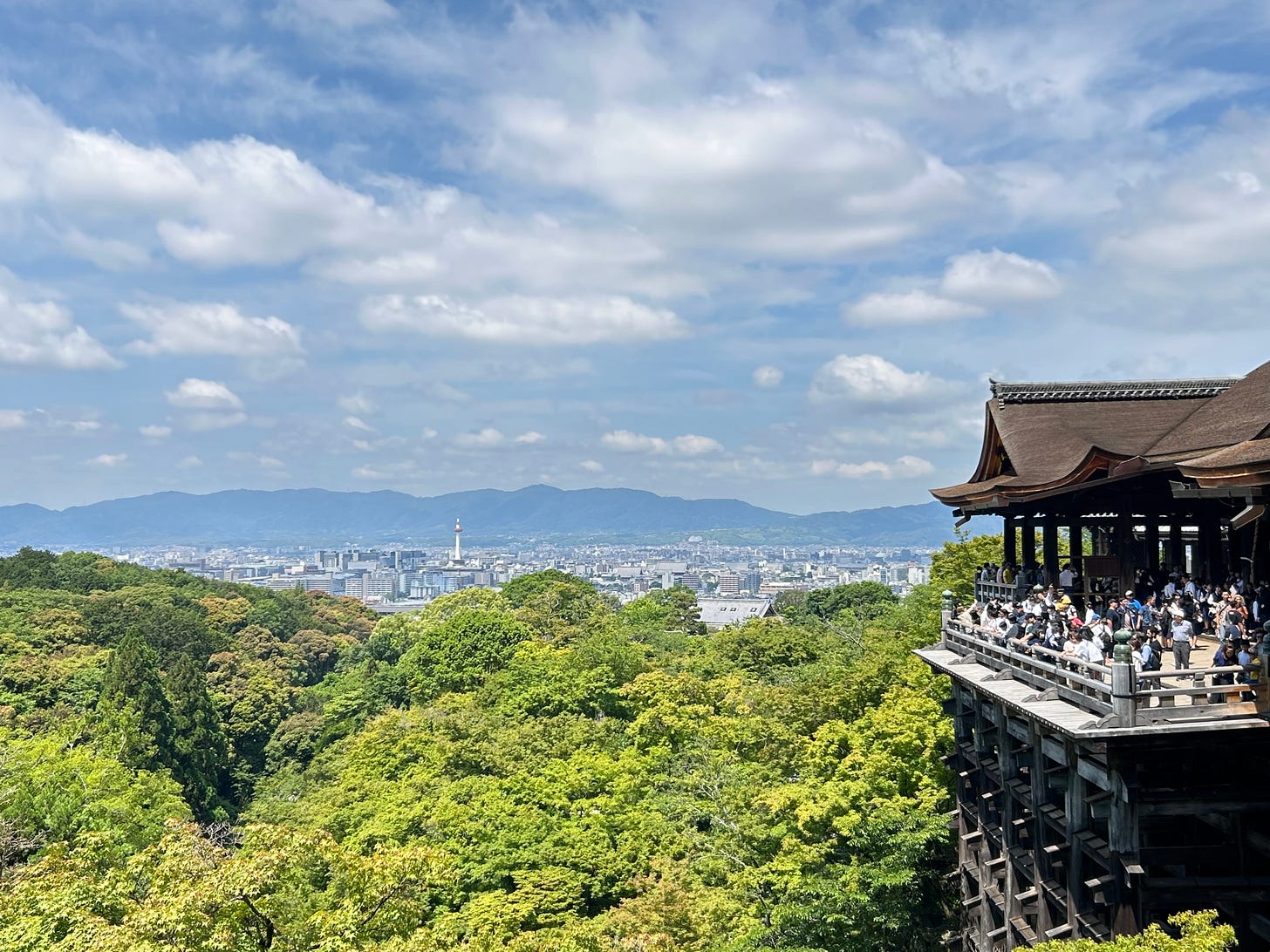
I loved your non-touristy and uncrowded photos … looks like you had a pretty lovely experience there!
Good stuff! Thanks for this.